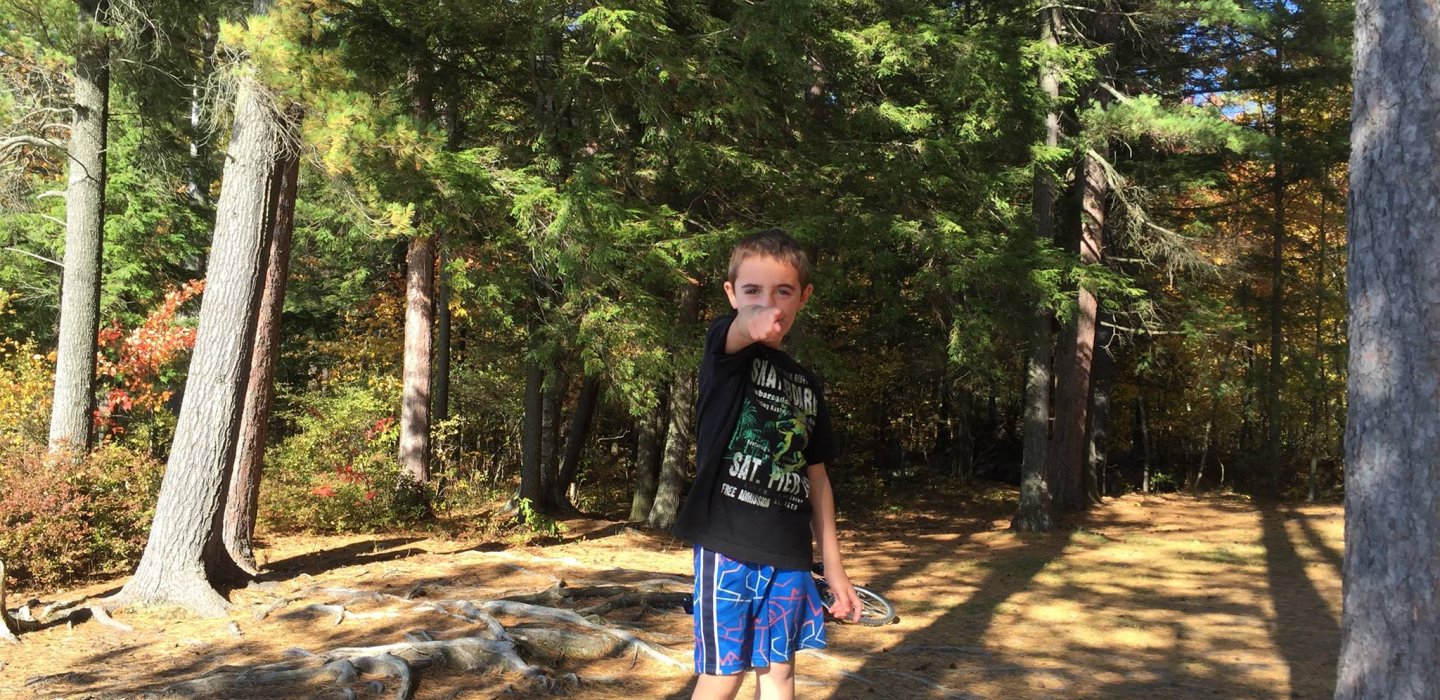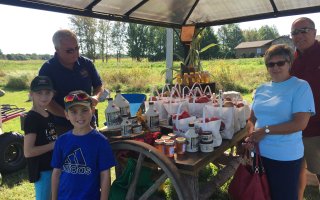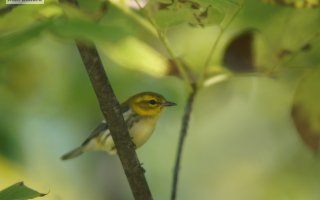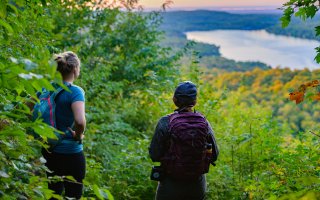
While Malone has many good trails, from the ease of the Malone Rec Trail to the wilderness views from climbing Elephant Head, there's another great option that's only a half hour away. It's the Paul Smiths College Visitor Interpretive Center. This hiking complex includes kid-friendly exhibits (some of them hands-on), art displays, a Great Room to watch the bird feeders from, and a wonderful variety of trails.
It's the real Adirondacks, with well-maintained trails that have had a lot of their rough edges smoothed off. This makes it beautifully wild, yet also family friendly. If you have young or inexperienced hikers, picking the right trail can mean the difference between creating a future enthused hiker, or coaxing along a reluctant child on a trail that is going to tire them out too soon.
Here are some great hikes and what makes them good choices for different ages of children.
Barnum Brook Trail - toddlers
This trail has a lot going for it when it comes to those old enough to walk, but not old enough to do it well. The Barnum Brook Trail is one of the shortest, being only a one-mile loop. It has been constructed to make walking easy, with broad flattened paths, only slight changes in grade, many benches to rest on, and a boardwalk section.
And it starts with a gazebo. Every small child wants to begin their hike from a "magic hut."

Adults and older children will find plenty to enjoy, too. Look for identification markers to identify different Adirondack trees, and help point out their distinctive features.
Small children love to know the names of things, and there are eleven different kinds along the trail, perfect for a game of eye-spy.

There's a second growth forest and little overlooks with steps for even more vistas to enjoy the expanse of Heron Marsh. St. Regis Mountain can be seen in the distance. Barnum Brook itself has wood bridges and a wooden boardwalk. There's a fish barrier dam for waterfall action, and then the trek finishes in a stand of majestic Eastern White Pines.
I've never taken this walk without spotting some bit of wildlife, from birds singing and chipmunks running up and down the trees, to splashes that could be an otter (especially in the early morning). I have seen a Great Blue Heron and raptors riding the air currents.

When hiking with smaller children, it's helpful to set small goals, and this trail -- complete with benches at comfortable intervals -- is a great choice. No need to hurry, there are a lot of things to look at and study on this route.
Boreal Life Trail - school age
This trail is also a mile loop, and also begins at the gazebo, but offers more challenging terrain and several unique features to interest elementary school-aged children. The Boreal Life Trail has views of Barnum Brook and Barnum Bog, which has amazing miniature versions of trees seen elsewhere, because of the special challenges of bog ecology.
This section is a favorite, as it contains trees the size of bushes, and bushes the size of our hand. Take note of the trees which can be spanned by a child's hand, because you will be seeing bigger versions, of similar ages, further down the trail.

Take a right at the gazebo to walk through Red Spruce, Balsam Fir, Eastern White Pine, and Eastern Hemlock, with informative markers to help everyone tell them apart. It starts out easy, broad and flat, and a left at the intersection after the road crossing leads to a 1,600-foot boardwalk across Barnum Bog. When this ends, the terrain changes to a conifer forest along the shore of Barnum Pond. A right turn will lead to a steeper trail through an upland section.
But first, take a short detour to the right for the elevated viewing tower.

This has glorious views of the pond, Jenkins Mountain, and St. Regis Mountain which is much further away. This tower platform has an irresistible pull for children. It makes for a wonderful rest (or lunch) spot before tackling the more uphill sections. (Remember, pack it in and pack it out.)
This trail is also known for its interesting mosses and mushrooms. Visit the fungi table in the museum before leaving and see how many everyone can identify.
Black Pond - older kids and teens
The Black Ponds Loop is 2.3 miles of more challenging backcountry trail. The path can be tricky. Hiking boots are a must.
Black Pond itself is 72 acres in size, with access only given to non-motorized boats. So it will have a tranquil feel all the way through. The western boundary is a fine example of the mix of glacial soil and boulders known as an esker. As the glaciers began to melt, streams of water carried sediments, ground rock, and larger rocks which wound up gouging waterways that would later fill as the environment warmed.

It's a great look at different forests. There's conifer (evergreens), deciduous (leaves drop in fall), and mixed, with a wetland area on the south end of the pond. The pond's outlet is known as Black Pond Stream, and appears at the beginning of the hike.
As we hike along, we will see the water sources getting larger and larger. One of the reasons this trail is so rugged is that it follows the shoreline so much, with its fluctuations in grade and an abundance of roots and rocks.

The view is always changing. There's the esker, a foot bridge, and a glade of ferns before a dam. Look for the two lean-tos for day use, picnic spots, and some relaxation.
This is not like some trails where you can set a brisk pace because the scenery never changes. This has many different angles to contemplate and an ever-changing view of the sky. Overhead can be bright blue, then you may break out into a wide section of the pond and see clouds.

It is also the best spot to hear loons. Common Loons nest on Black Pond and their calls, at dawn and dusk, are part of the Adirondack soundtrack. Black Pond, Black Pond Stream, or Little Black Pond also are home to plenty of ducks, herons, wrens, and warblers. It is also a popular spot for spring and summer blooming wildflowers.
Hikers of junior high or high school age have the stamina for a longer and more rugged hike, but they would also like a destination. It helps when they have a camera, a birding guide, or a wildflower reference app to create a sense of exploration and accomplishment.
Be ready to fall in love with hiking on this great introduction to Adirondack trails.
Get a good night's sleep with our lodging. Find a fine meal with our dining. Learn more about our hiking.
This week in related ADK news:







Comments
Add new comment